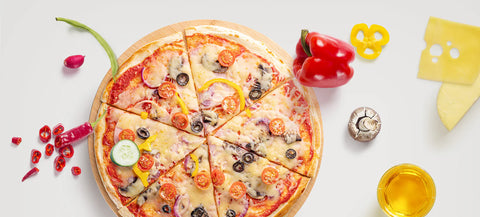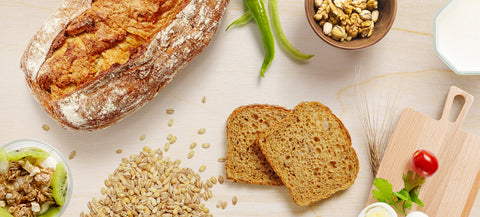The bottom of the pizza, known as the crust, can vary widely depending on the style — thin, as in the classic hand-tossed Neapolitan pizza, or thick, as in Chicago-style deep-dish. It is traditionally plain, but it can also be seasoned with garlic or herbs, or even stuffed with cheese. The outer edge of the pizza is sometimes referred to as the cornicione.
Some pizza doughs contain sugar, which helps the yeast rise and promotes browning of the crust. The concept of pizza dipping sauce was introduced by the American chain Papa John's Pizza in 1984 and has since been adopted by many, especially for dipping the crust.
In restaurants, pizzas may be baked in a firebrick oven, an electric deck oven, a conveyor belt oven, or the traditional way in a wood- or coal-fired brick oven. The pizza is placed into the oven using a long paddle called a peel, and it's baked directly on hot bricks, a screen (a round metal mesh, usually aluminum), or any other oven surface. The peel is typically dusted with cornmeal to help the pizza slide off and be removed easily.
At home, pizza can be baked on a pizza stone in a standard oven to mimic the heat transfer of a brick oven. Cooking directly on a metal surface transfers heat rapidly and can burn the crust. Some home chefs use outdoor wood-fired pizza ovens, often dome-shaped like the traditional ones used for centuries, to achieve even heat distribution.
Another method is grilled pizza, where the pizza is baked directly on a barbecue grill. Greek-style pizza, as well as Chicago deep-dish and Sicilian-style pizzas, are baked in pans rather than directly on the oven surface. Most restaurants use dedicated pizza prep tables to assemble their pizzas, and mass production in chains can be fully automated.



